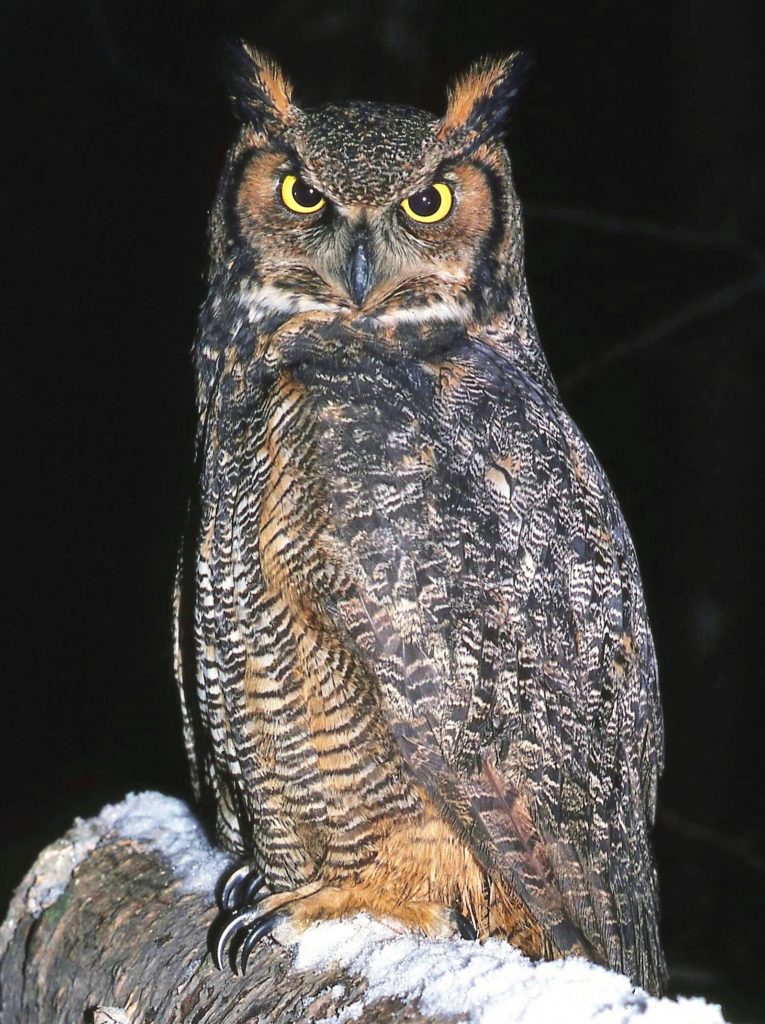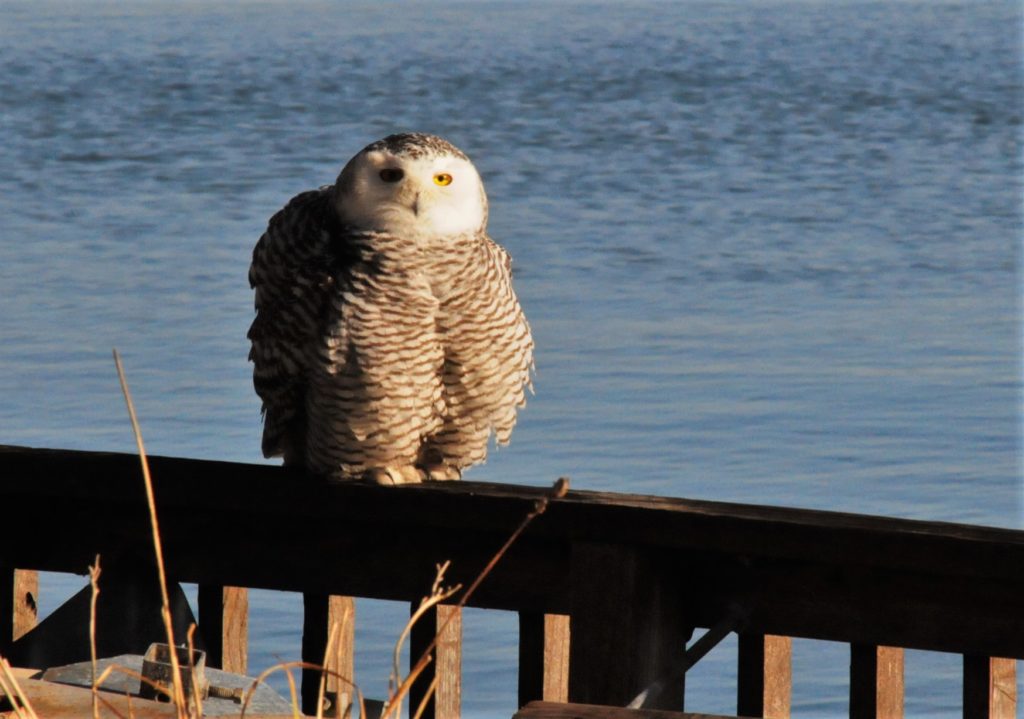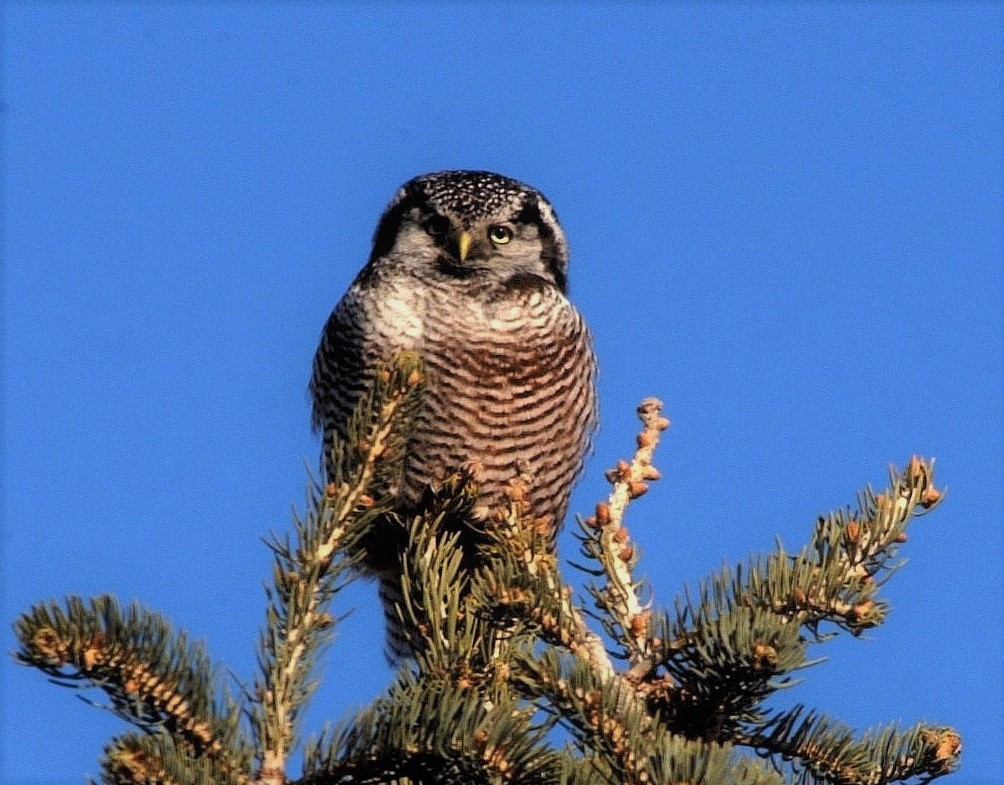Photography courtesy of Lowell Washburn, all rights reserved.
There are a lot of good reasons to visit Iowa’s winter woodlands. Listening to the eerie, nighttime serenades of resident owls ranks high on my list of favorites.
As is the case with any outdoor adventure, being prepared is key to success. It is, after all, the dead of winter. Dress too lightly and you’ll freeze. Wear too much and you’ll sweat; and then you’ll freeze. If your woodland has trails or contains open stretches of mature timber, then skis or snowshoes can save a lot of the huffing and puffing that usually go with “post holing” your way across snow-covered landscapes.

When listening for owls, the fun begins at sunset. As diurnal predators, such as hawks and eagles are flying to nighttime roost sites, owls are just punching in for their jobs on the night shift. Equipped with a deadly combination of silent flight, keen vision, and even keener hearing; owls are a scampering rodent’s worst nightmare. Seven species of owls are known to nest in Iowa; at least three more occur as rarely observed winter visitors. Since owls are active at night, they are most often identified by sound rather than sight. Regardless of species, each owl has its own unique set of vocalizations that are easily distinguished from those of its cousins.

Master of Disaster – A great horned owl surveys its nighttime domain. With powerful wings, needle sharp talons, and vice-like grip; horned owls can catch and eat just about anything that doesn’t eat them first. Menu items may even include striped skunks.
Most familiar to rural Iowans statewide, are the deep five or six note calls of the great horned owl. Commonly referred to as ‘hoot owls’, great horned are massive and powerful. Although stately and dignified in appearance, horned owls are the ultimate Night Stalkers. Often called ‘Flying Tigers’, they have been known to kill and eat such formidable prey items as red-tailed hawks, mink, hen turkeys and other owls. When held back from a square meal, horned owls can become downright dangerous. When pressed by hunger, they may even add striped skunk to the menu; and I’ve encountered a number of great horned that reeked with the unmistakable aroma of their most recent victims.
Well adapted to subzero environments, horned owls are the first birds to begin nesting in Iowa each year. The first eggs have already begun to appear, and it is not unusual for a brooding female to become buried in several inches of new snow. A dedicated provider, the male does all the late winter hunting while his mate incubates eggs or quietly broods newly hatched young.

During winter, Iowa’s resident owl populations are occasionally bolstered by visitors from the far north. Immature snowy owls are the most frequent invaders. Wherever they’re sighted, snowy owls never fail to draw an enthusiastic crowd of binocular wielding spectators. But although the White Ghosts may generate plenty of excitement, nothing compares to the frenzy created during the winter of 2005 when a rare northern hawk owl suddenly appeared in the Worth County community of Manly, Iowa. An inhabitant of northern Canada’s boreal forests, most hawk owls spend their entire lives north of the international border. This was, in fact, only the second time the species had ever been recorded in Iowa. Birders from across the state, as well as from much of the upper mid-west, rushed to catch a lifetime glimpse.
For the last half of February, the Manly Casey’s store became the unlikely epicenter of the Iowa bird world. Gas sales soared. Coffee was consumed by the gallon. Donut cases required constant restocking. The weather was cold and lines to the restrooms stretched the length of the store.

“It’s been crazy,” exclaimed the woman behind the cash register. “It’s been like this every morning. I’ve never seen anything like it. People are coming from everywhere to see that owl.”

 Tom Cope
Tom Cope Sue Wilkinson
Sue Wilkinson Susan Judkins Josten
Susan Judkins Josten Rudi Roeslein
Rudi Roeslein Elyssa McFarland
Elyssa McFarland Mark Langgin
Mark Langgin Adam Janke
Adam Janke Joe Henry
Joe Henry Kristin Ashenbrenner
Kristin Ashenbrenner Joe Wilkinson
Joe Wilkinson Dr. Tammy Mildenstein
Dr. Tammy Mildenstein Sean McMahon
Sean McMahon